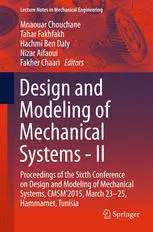 Un autre article paru dans la revue « Design and Modeling of Mechanical Systems de mars 2015.
Un autre article paru dans la revue « Design and Modeling of Mechanical Systems de mars 2015.
In this study, transient pressure in piped liquid due to waterhammer is a function of structural restraint at elbows. To study the effect of this phenomenon on polyethylene elbowed pipe networks, experimental tests were performed on polyethylene bent pipes, either in the absence or presence of a pre-crack by measuring the toughness and determining the mechanical behavior of HDPE. These characteristics were been used to perform simulations using ABAQUS software, the internal pressure increase, to investigate the safety of bent pipes using an angle of 90 ° bend with 11.4 mm thickness and a right portion of 150 mm as length


